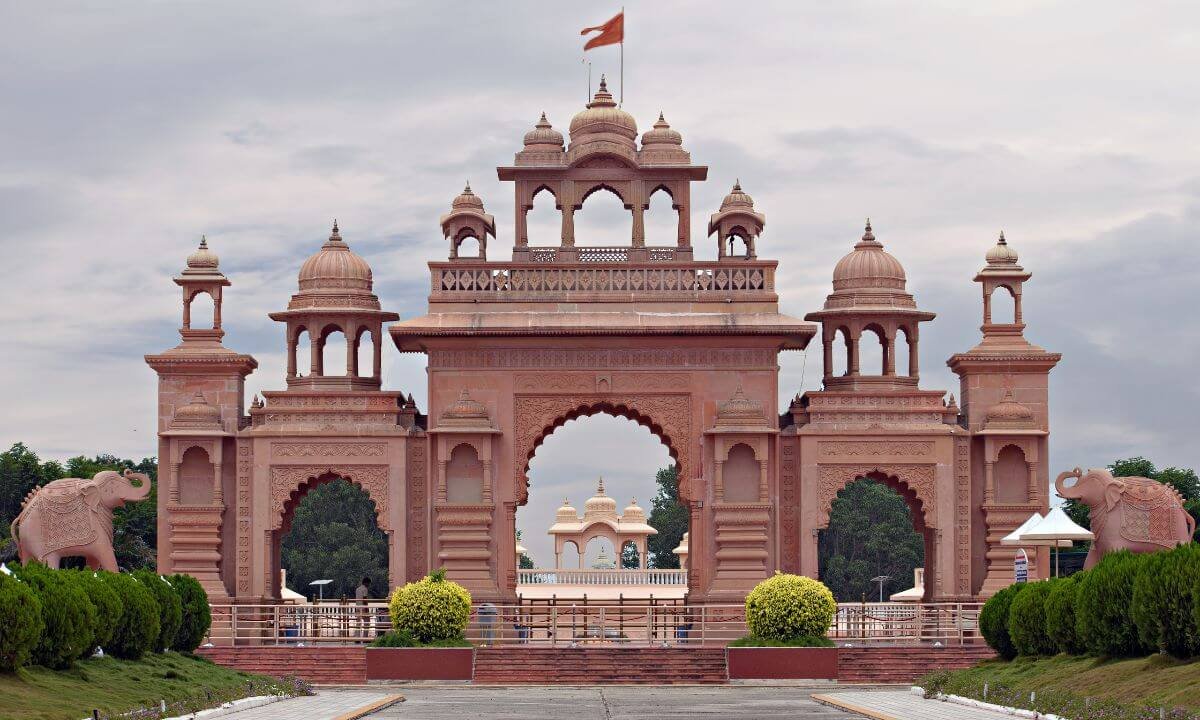Architectural Wonders of Amravati: A Photographer’s Paradise
For photographers and multimedia producers, Amravati—a city rich in history and culture—is a treasure mine. Renowned for its rich architectural legacy, this Andhra Pradesh city presents a mix of modern buildings reflecting its dynamic past and future, as well as old temples and historical sites. Amravati provides many chances to capture fantastic images regardless of your level of experience—professional or enthusiastic amateur. This blog will look at some of Amravati's architectural beauties and offer doable advice on using these sites for your artistic endeavours best.
The Great Amaravati Stupa
The Great Amaravati Stupa is a historic Buddhist monument from the second century BCE and is among the most famous sites in Amravati. Built under the Satavahana dynasty, this stupa was once among India’s biggest and most significant. Though much of it has faded with time, the surviving relics show complex carvings reflecting events from the life of Lord Buddha. Especially remarkable are the exquisitely carved gateways (toranas), which chronicle events from Buddha’s life and offer rich histories that could motivate striking images.
Photography Tip:
Consider filming around golden hour—shortly after sunrise or before sunset—when the soft light accentuates the textures of the stone carvings, capturing the grandeur of the stupa. Cover the whole construction with wide-angle lenses and play with several angles to draw attention to its minute elements. Close-ups of particular carvings can also produce striking pictures with narrative value.
Aameswara Temple
Another architectural wonder in Amravati honouring Lord Shiva is the Amareswara Temple. Renowned for its magnificent Dravidian architecture, this temple is a component of the Pancharama Kshetras Photographs of the temple are stunning because of its tall gopuram, entrance tower, which features elaborate carvings. The calm surroundings of the shrine accentuate its beauty.
Photography Tips:
Try taking pictures of the Amareswara Temple from several angles—both expansive views, including surrounding scenery and close-ups of its architectural features. Visiting during holidays offers unique chances to photograph colourful ceremonies and events, adding life to your photos.
Gawilgharh Fort
Rising on a hilltop with a view of Amravati, Gawilgarh Fort is a historical monument spanning over three hundred years. On its grounds, this fort boasts impressive stone walls, historic buildings, and magnificent views of the surroundings. The remnants of the fort offer an excellent background for pictures and reveal stories of its legendary history.
Photography tips:
Take amazing scenery photographs using the fort’s raised vantage point. Early morning or late afternoon light can accentuate the stone wall textures and provide dramatic shadows. Consider employing a drone for overhead views highlighting the architecture of the fort and its breathtaking surrounds.
Modern Architectural marvels
Amravati is about historic buildings and features contemporary architectural masterpieces like Foster + Partners’ new government facility. This ambitious effort seeks to combine modern design with classic Indian architectural ideas like Vastu Shastra. The complex is defined by open areas, rich vegetation, and buildings modelled by Buddhist stupas.
Photography Tips:
When photographing contemporary architecture, concentrate on lines and symmetry to produce strikingly arresting compositions. Try reflections on glass surfaces and utilise leading lines to direct visitors’ gaze across your pictures. Nighttime photography may also be satisfying; striking images can arise from photographing illuminated structures against a dark sky.
The Amravati Museum
The Great Stupa’s sculptures, among other relics from the area’s rich history, are displayed at the Amravati Museum. This museum offers further opportunities for photography and helps one grasp Amravati’s creative legacy.
Photography tips:
Consider lighting circumstances inside museums; in low-light environments, use a tripod for stability. Respect any limitations on flash photography and concentrate on capturing specific objects. Recording your museum experience will enrich your project by highlighting not just things but also their tales.
Local markets: Blend of modernism with tradition.
Local markets in Amravati are lively scenes full of vibrant booths offering anything from textiles to handy articles. These marketplaces are great places for street photography since they showcase both modern businesses and traditional crafts.
Photography tips:
Fast shutter speeds will help you freeze activity among busy crowds, capturing market scenes. Candid views of merchants engaging with consumers might tell tales about regional culture. Early in the morning is perfect for improved illumination and less traffic.
Conclusion: Capturing Amravati’s essence
Amravati is a city where modernism meets history and presents a wealth of architectural marvels that inspire photographers and multimedia producers. Whether your inclination is for modern architecture or historic temples, each site offers particular chances for visual narrative.
Remember to respect regional customs and traditions while you visit these locations, preserving their beauty. Using several angles, lighting, and artistic compositions can help you to highlight the core of Amravati in your work, thereby turning ordinary images into engaging stories that people will find appealing.
Ultimately, as you discover architectural gems one frame at a time, let Amravati inspire your next artistic endeavour.
- Amravati, architecture, Content Creation, film shooting, film shooting location, historical buildings, Location for photoshoot, modern structures, music videos, photo shoot location, Photography, photography location, photography locations in Amravati, Photography Tips, Scene Locate, SceneLoc8, Temples, vloggers

